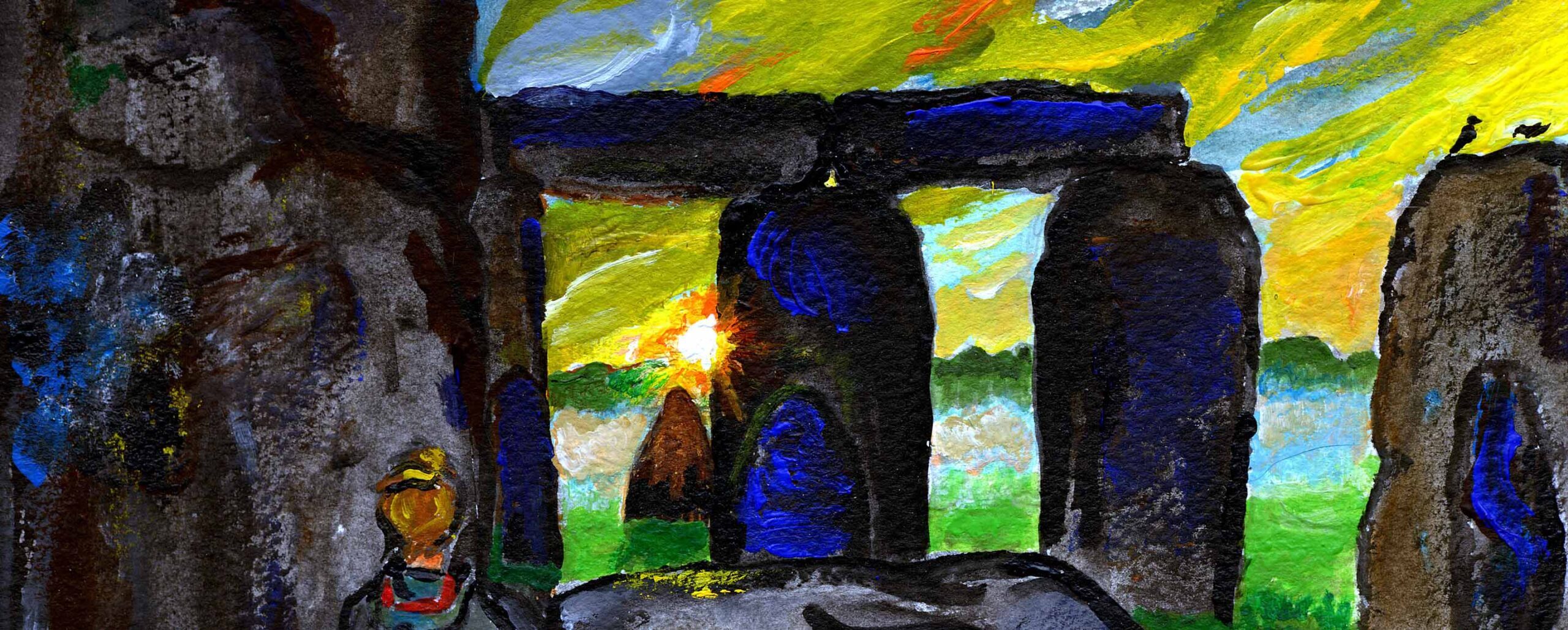The Orionid meteors are most likely to be seen in the night between October 21 and 22 (Friday/Saturday).

See the end note about enlarging illustrations.
Here is the radiant climbing from the eastern horizon around midnight. The higher the radiant, the more meteors are likely to show above the horizon. The radiant is the spot from which they appear to fly out to any part of the sky. They are traveling in parallel paths, being bits of matter that were shed from a comet and roughly follow its orbit. The radiant of these meteors is in the “club” brandished by giant Orion, though it shifts slightly from night to night as Earth moves around its orbit.
The Orionids do not rank among the most productive of the annual meteor showers, but they are exciting to contemplate because of their origin. The comet they derive from is Halley’s, the one with the longest history (and the first recognized to be periodic, so that it opened up the whole subject of comet and meteor science).
The orbit of the comet, and of its meteor stream, is retrograde: roughly opposite to the direction of Earth’s orbit. The Orionids are part of the stream as it passes inward “over” (north of) the October part of our orbit, and the Eta Aquarids are part of the stream as it departs outward under the May part.

This space diagram shows the path of Comet Halley during the most recent of its 76-years-apart visits, in late 1985 and early 1986. The stalks down or up to the ecliptic plane are at intervals of one month. The blue arrows are sightlines from Earth to the comet.
In this view of Earth from ecliptic north –

– the dotted line represents just the thread of the meteor stream that happens to be overhead; the stream is far wider than the Earth. An arrow on the equator represents Earth’s rotation in 3 hours. America is coming around into more direct view of the radiant.
The peak of the shower is expected to be about 10h Universal Time on Oct. 21, but such predictions are “soft” for most meteor showers. The ZHR, zenithal hourly rate, is given as 20 and sometimes can be much higher. But this is the estimated number that an observer might see at the peak time with the radiant overhead and in perfect sky conditions – so your real count is liable to be lower. This year is favorable because there is no interference from moonlight.
Metrodconfusion
“The Met” can mean in London the Meteorological Service or the Metropolitan Police; in New York, the Metropolitan Museum of Art or the Metropolitan Opera. In Paris, the Metro is the subway.
From the root of Greek mêtêr, “mother, come metropolis, metropolitan.
From Greek meta, “with” or “across,” and aeirein, “to raise,” come meteor which at first meant any phenomenon in the atmosphere; and meteorology, the study of the weather – not of meteors.
And from Greek metron, “measure,” come meter or metre (in the senses of a poetic scansion pattern or a measuring device or a thousand millimeters), and metric, symmetric, metronome, diameter, perimeter, odometer<%>… and <I>metrology, a system of poetic scansion, or the study of systems of measurement. Measure is from Latin mensura, which comes from a root that may or may not be related.
__________
ILLUSTRATIONS in these posts are made with precision but have to be inserted in another format. You may be able to enlarge them on your monitor. One way: right-click, and choose “View image” or “Open image in new tab”, then enlarge. Or choose “Copy image”, then put it on your desktop, then open it. On an iPad or phone, use the finger gesture that enlarges (spreading with two fingers, or tapping and dragging with three fingers). Other methods have been suggested, such as dragging the image to the desktop and opening it in other ways.
Sometimes I make improvements or corrections to a post after publishing it. If you click on the title, rather than on ‘Read more’, I think you are sure to see the latest version. Or you can click ‘Refresh’ to get the latest version.
This weblog maintains its right to be about astronomy or anything under the sun.

Meteorology as defined in your Astro Companion is the study of “Any phenomenon in the atmosphere” including clouds, rain, sleet, snow, rainbows, lightning, aurora, gegenschein glow, meteors and meteorites
I enjoy all of the above, especially the colors of the clouds in the terminator zone.
The locals use the term DC Metro or just Metro police to describe the Metropolitan Police Dept of the District of Columbia, so unfortunately it doesn’t quite fit in with the “Met” theme LOL.
another reliable and accurate almanac entry. Guy’s orreries. thanks very much.
The Washington DC police are also called the Metropolitan Police but not being from there I don’t know if the locals shorten it to the Met..